The main Roscosmos «workhorse»: Soyuz rocket launch history
13th May 2022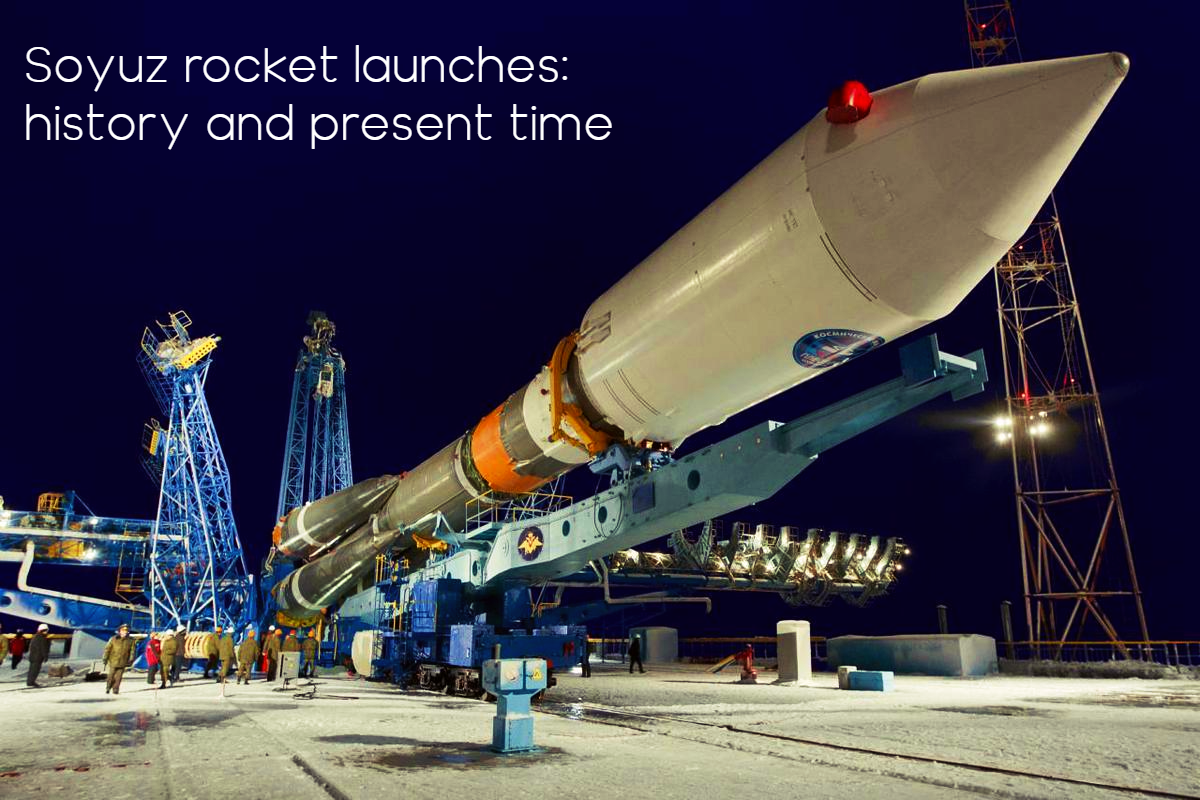
Launch vehicles are the defining factor in space dominance, and Soyuz rocket launches is one of the most impressive space achievements in Russia. So far, rockets offer the only means to overcome gravity and break out of the Earth’s atmosphere. Statistics show that the USA, Russia and China account for the largest number of orbital launches in the history of space exploration, which made these countries the space race leaders. Even though today the lion’s share of launches is carried out by the US and Chinese rockets, the Russian Soyuz rocket is still the most frequently used launch vehicle in the world since its debut in 1966.
In this article, you will find out what the main Russian space “workhorse” is, Soyuz features, modifications, launch history, failures and prospects after space sanctions because of the Russian war against Ukraine. We will also discuss when Soyuz’s last launch took place.
Soyuz rocket family overview
Soyuz (from Russian – Union, Alliance) is a family of disposable 2 and 3-stage launch vehicles developed by Design Bureau Energia and manufactured by the Progress Rocket and Space Centre in Samara city, Russia. Soyuz rockets are an improved version of the Vostok and Voskhod launch vehicles of the P-7 family, a Soviet ballistic intercontinental missile developed by designer Sergei Korolev in 1957. These were the launch vehicles of the P-7 family that the Soviets used for the first launch of an artificial Earth satellite and then the first astronaut Yuri Gagarin.
Soyuz rockets operate on highly efficient low-toxic RP-1 / LOX fuel and can deliver from 2800 kg to 9200 kg of payload to Low Earth orbits, depending on the modification and launch point. Due to their simplicity and well-established production cycle, they are characterised by low cost and extremely low accident rate (approximately one accident per 50 launches).
Soyuz is actively used by Roscosmos for launching Russian satellites, Soyuz MS manned spacecraft and Progress unmanned supply ships to the ISS, as well as by the French company Arianespace and the joint French-Russian company Starsem for commercial payload launches.
For almost a decade, between the last Space Shuttle flight in 2011 and the first manned SpaceX Falcon 9 (Crew Dragon) mission in 2020, Soyuz was the only launch vehicle to carry astronauts to the ISS.
How many Soyuz rockets have been launched?
How many Soyuz rockets have been launched since 1966 is a difficult question. We know for a fact only that the total number of all launches (test, suborbital and orbital) exceeds 1800. This number exceeds any other rocket family in the world. In total, seven generations of Soyuz rockets were developed. And here are the statistics of their orbital Soyuz launches by year, including Soyuz rocket failures.
| Generation | Years of operation | Orbital launches | Soyuz rocket failures |
| Soyuz 11А511 | 1966 – 1976 | 32 | 2 |
| Soyuz L | 1970 | 3 | 0 |
| Soyuz M | 1971 – 1976 | 8 | 0 |
| Soyuz U | 1973 – 2012 | 783 | 22 |
| Soyuz U2 | 1982 – 1995 | 70 | 0 |
| Soyuz FG | 2001 – 2019 | 70 | 1 |
| Soyuz-2 | 2006 – … | 141 | 2 |
After all, although Russian spacecrafts show unprecedentedly low statistics of emergencies, as we can see, Soyuz rocket failures still happen. Let’s take a closer look.
Soyuz rocket launch failures
In the entire history of Soyuz orbital launches, 27 accidents have been confirmed. 22 of those happened with Soyuz U, which was operational from 1973 to 2012.
In October 2002, the Foton satellite crashed near the launch site in Plesetsk after the Soyuz U upper stage engine failed and the rocket crashed. One person on the ground was killed and the infrastructures suffered extensive damage.
On 24th August 2011, Soyuz U, as a result of a third-stage engine failure, was unable to deploy the Progress M 12 spacecraft into orbit to deliver cargo to the ISS, and it fell to the ground. A breakdown of the air duct, which cut off the fuel supply, was the official cause of the engine failure.
On 1st December 2016, another cargo ship, Progress MS-04, was lost shortly after takeoff, again due to a problem with the Soyuz-U third stage.
Soyuz-2 also failed a lot. On 23rd December 2011, during the mission of Soyuz 2.1b with the Russian satellite Meridian, the spacecraft could not be deployed into the calculated orbit and fell to the ground instead. After an investigation, an abnormal operation of the rocket’s third-stage engine was blamed for the satellite loss.
On 29th April 2015, the Soyuz 2.1a rocket successfully took off from the Baikonur Spaceport with the Progress 27M cargo spacecraft. However, it was unable to place the cargo into the calculated orbit, which led to its uncontrolled rotation and deorbiting. As a result, the rocket burned out in dense layers of the atmosphere. The probable cause of the damage to Progress was the depressurisation of the fuel tanks of the third stage at the time of the engine shutdown.
On 11th October 2018, the Baikonur MCC was forced to urgently interrupt the mission of the Soyuz MS-10 manned spacecraft to the ISS. The reason was Soyuz-FG rocket booster failure. During the separation of the first and second stages of the rocket, a collision occurred that caused the destruction of the 2nd stage and a deviation from the given trajectory. The ship with the crew performed an emergency separation, returning to Earth along a ballistic trajectory. The astronauts were not injured.
Since then, no Soyuz rocket failures were reported. But is it because the number of Soyuz missions has recently halved?
Soyuz modifications (2006-2022)
To date, Soyuz-2 rocket is operated in 5 modifications. You can see the main differences between these modifications in the table below.
| Soyuz-2 Mod | payload mass to LEO, t | payload mass to SSO, t | payload mass to GTO, t | LV mass, t |
| 2.1 a | 7 – 7.4 | 4.0 – 4.6 | 1.5 | 308 – 314 |
| 2.1 b | 7.85 – 8.7 | 4.9 – 5.0 | 1.8 – 2.0 | 308 – 314 |
| 2.1 c | 2.8 -3.3 | 1.2 – 1.4 | 157 – 160 | |
| ST-A | 4.3 | 2.81 | 306 – 313 | |
| ST-B | 9.2 | 4.9 | 3.25 | 306 – 313 |
All modifications, except for 2.1c, are three-stage medium-class rockets. 2.1c is a light 2-stage rocket. Soyuz ST-A, and ST-B are modifications of 2.1a and 2.1b rockets for the European market. Their main difference from the original specifications is the refinement of the control system for receiving commands from the ground stations to terminate flights, the refinement of telemetry for European ground stations, and the refinement of the operating environment (high humidity, sea transportation, etc.)
Where do Soyuz rockets launch from?
So, where do Soyuz rockets launch from? In the recent years, Soyuz-2 rockets were launched from four spaceports:
- Plesetsk, Russia. LC43 – 54 launches (2011-2022)
- Baikonur Kazakhstan LC 31 – 49 launches (2006-2022)
- Kourou, Space Center in French Guiana- 27 launches (2011-2022)
- Vostochny Spaceport 1C Far East Russia – 11 launches (2016-2022)
As we can see, the main Soyuz launch site is Plesetsk, followed by Baikonur. Vostochny spaceport, as the youngest (opened only in 2016), cannot yet boast of solid statistics, but the launch complex is still under construction and will soon be able to perform more launches.
SOYUZ-2 LV Launch from Vostochny Cosmodrome
Kourou spaceport was used only for launches of the Soyuz ST-A and ST-B versions operated by Arianespace and Starsem. However, Roscosmos suspended cooperation with Kourou in March. The reason was the round of space sanctions imposed by Europe on Russia because of its military invasion of Ukraine. Where do Soyuz ST rockets launch from now? And will they, given that these Soyuz modifications were created specifically for the infrastructure and geographical features of Kourou? However, Roscosmos is not too concerned about this, betting on its own spaceports and Kazakhstan’s loyalty.
At the same time, the strengthening of sanctions is already affecting the supply chains of imported rocket components for Soyuz. Since Roscosmos is not a completely self-sufficient structure and buys most of its electronics abroad, in the near future, its shortage may become a serious problem for Soyuz rocket launches, not to mention the mission safety.
When was the last Soyuz launch?
It was 7th April, when the last Soyuz launch took place. Launched from Plesetsk spaceport, Soyuz 2.1b deployed a Russian electronic intelligence satellite Lotos S1 into orbit. This was the second mission to deploy a military spacecraft after the delivery of the Meridian-M communications satellite on 22nd March. During this mission, Soyuz featured a letter Z, symbolising Russia’s military campaign in Ukraine. It seems that Russia wants to fight not only on Earth but also in space. But something tells us it will suffer yet another defeat in space as well, regardless of its long Soyuz launch history.
By breaking off cooperation with ESA on the Kourou spaceport and the British satellite operator OneWeb, which accounted for 12 Soyuz liftoffs in the last year alone, Roscosmos has effectively deprived itself of a third of all missions. The next step could be breaking the cooperation with NASA, ESA and CSA on the ISS mission, and then Russia will have to contend with meeting domestic needs. Which is exactly what it’s doing.
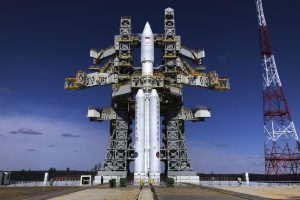
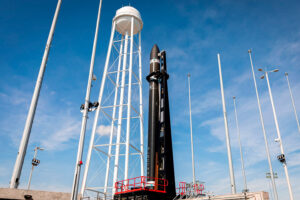
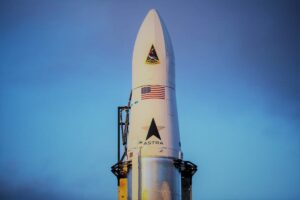

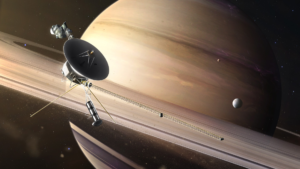

Thank you for your comment! It will be visible on the site after moderation.